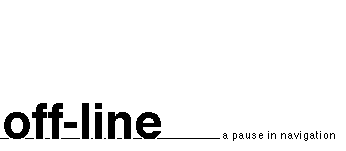We’re drowning in numbers. And we are having a hard time trying to understand what they mean. Bejamin Disraeli used to say: «There
are three kinds of lies: lies, bloody lies, and statistics». That was over 150 years ago, but thigs haven’t changed – except for the fact that there are many more numbers around and they are quoted all the time, all over the place. There is a wonderful little book on this subject, How to Lie with Statistics by Darrell Huff, that was published in 1954 but is still being reprinted – because it’s as accurate today as it was when he first wrote it.
They aren’t always “lies”. Statistics can be deliberately manipulated; or they can be “false” because of errors in the way data are collected and analyzed – or in the interpretation of the results. Even when the mathematics are correct (often they are not) there can be differences depending on who is asked what and how, on how the data are collected and analyzed, on what the answers are supposed to mean. It’s possible to “prove” with surveys and statistics amost anything – or its opposite.
There is a “numbers superstition”. I a concept is expresses as a number (or “supported” by numbers) it’almost automatically perceived as “sientific” – even when it doesn’t fit with other information – or the numbers, if checked with a minimum of care and depth, turn out to be meaningless.
Numbers are often used to convey a feeling of “accuracy” in a business decision. When that is just padding or cosmetics for a strategy that is soundly based and well planned, the number tricks can be relatively harmless. But when it’s done to avoid the responsibility of a decision, or to disguise risks, it can be very dangerous.
For many years I’ve ben dealing with numbers. For “pure” research and study, or for business reasons. I’ve learnt to be very careful – and never trust a number until I’ve fully understood what it means – and checked it against other sources, including a strong dose of common sense, practical experience and instinct (there is an art of “smelling” information; in France they call it the pifomètre).
I’ve also learnt that where apparently there are no data there is always a way of finding some relevant information. And when there are too many it’s a fine art to pick the few that are really useful for a specific purpose. Above all, it’s never safe to base da decision (or an opinion) only (or predomoinantly) on data.
David Olgilvy used to say that market research is like a lamppost: it can shed some light on the road ahead, but we should not lean on it as drunkards do. That can be applied to any sort of statistics or number-crunching.
There is a particularly intense proliferation of data about the internet, including “projections” that are practically never confirmed by facts. Figures from different sources are often enormously different. None of that is surprising. It’s pretty difficult to produce a sound analysis in the case of trends that have been followed and double-checked for decades. It’s practically impossible to come up with tools that can truly measure something as complex and turbulent as the evolution of the internet.
There is a section on this site called dati where I am doing my best to collect, analyze and update data about the net – worldwide, in Europe and in Italy. (I apologize for the fact that, so far, it’s only in Italian; but figures, tables, charts and maps are, I trust, pretty clear regardless of language). That is a tiresome and often disappointing task. I don’t pretend (or believe) that any of the figures are inherently “true”. All contain biases and errors. But, by comparing sources and data over time and with each other, I think it’s possible to work out relevant trends and comparisons. And, of course, whenever an analysis turns out to be faulty (or the picture changes in the light of new data) it’s corrected in the next update.
In daily life, and in the practical case of an individual company or organization, things aren’t so difficult. It’s much easier (though not quite as simple as it seems) to work out relevant statistics on a specific case. And one of the great advantages of an interactive system is that everything can be constantly tested, verified and adjusted at every step. Trial-and-error has always been the best tool for learning (and decision making). The internet is an ideal environment to do just that.



